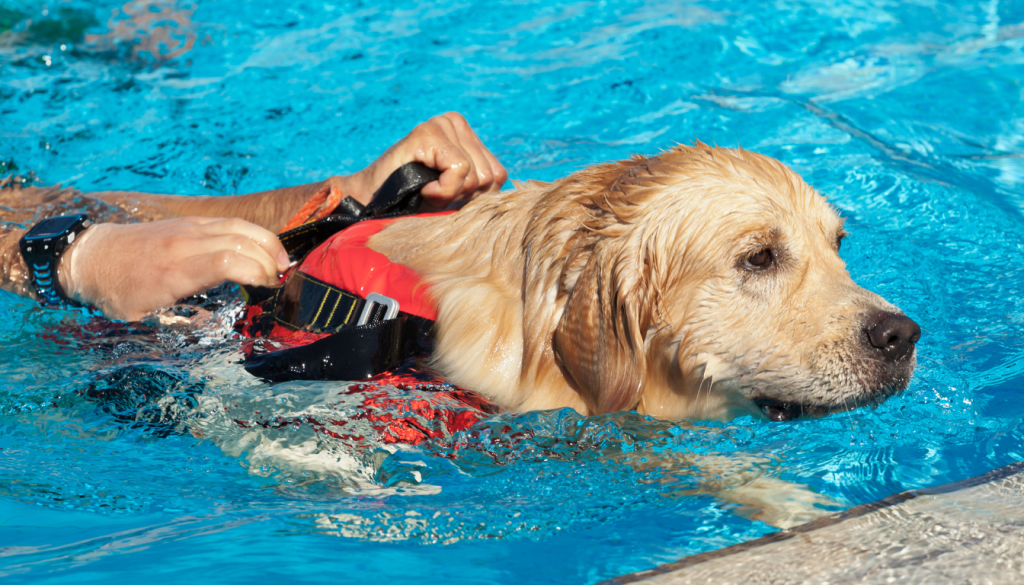Does your dog get excited at the sight of water, diving into kiddie pools and any body of water? Or is your dog more hesitant, perhaps even afraid to dip a paw into the pool? Every dog is unique, and their relationship with water can vary greatly.
Understanding Your Dog’s Relationship with Water
Your dog’s breed, personality, and experiences play a significant role in how they interact with water. Some dogs are natural swimmers, while others may be more water-shy.
Whether your dog is a natural swimmer or prefers to stay on dry land, it’s important to teach them water safety. Whether you’re planning to surf, canoe, or even just set up a kiddie pool, understanding the best and worst swimming breeds, teaching your dog to swim, and following water safety tips are crucial.
Can All Dog Breeds Swim?
It’s a common misconception that all dogs are born swimmers. While most dogs will instinctively try to paddle if they end up in the water, this doesn’t mean they are proficient swimmers. Depending on their breed, personality, and experience, your dog might be water-phobic or an excellent swimmer. However, with short, 10-minute swimming lessons and a dog life jacket, any breed can learn to swim.
Best Dog Breeds for Swimming
Certain breeds are naturally inclined to swim because they were bred for water-related tasks.
- Standard Poodles, Labrador Retrievers, and Boykin Spaniels: Bred to retrieve game for hunters.
- Newfoundland and Portuguese Water Dogs: Trained for water rescues, including towing swimmers and small boats to safety.
- American Water Spaniels, Irish Water Dogs, and Spanish Water Dogs: These breeds have waterproof coats and webbed feet, making them excellent swimmers and divers.
Worst Dog Breeds for Swimming
Some breeds struggle more with swimming:
- Brachycephalic breeds: French Bulldogs and Pugs have difficulty keeping their faces above water.
- Barrel-chested breeds: Boxers and Boston Terriers may have trouble staying afloat.
- Dogs with long chests and short legs: Breeds like Pembroke Welsh Corgis.
- Breeds with heavy coats: Pekingese and Shih Tzus can get weighed down by their coats.
- Hairless breeds: Chinese Crested Dogs are sensitive to cold water.
How Long Should Your Dog Swim?
Swimming is a vigorous exercise for dogs. Here’s a guideline based on health, age, and breed:
- Puppies: Long-nosed breeds can start at 2 months, while brachycephalic breeds should wait until 5 months. Limit swimming to 5-10 minutes.
- Small breeds: 10-15 minutes per day.
- Sporting and herding breeds: Up to 30 minutes per day.
- Senior, sick, and obese dogs: 15-20 minutes, split into smaller sessions.
Teaching Your Dog to Like Water
If your dog is water-phobic, follow these steps:
- Get comfortable with water: Use a dry kiddie pool lined with a non-slip mat. Reward your dog with praise and treats for stepping in.
- Introduce shallow water: Gradually fill the pool with an inch of lukewarm water. Encourage your dog to enter with treats and praise.
- Increase water level: Add more water and introduce floating toys to make it fun.
Teaching Your Dog to Swim
For dogs already interested in water, follow these steps:
- Use a life jacket and leash: Start with pool steps or shallow water. Lure with treats.
- Support in shallow water: Hold your dog’s life jacket handle and let them paddle. Use your arm for support if needed.
- Move to deeper water: Gradually transition, rewarding with treats and praise.
Water Safety Tips for Dogs
- Install safety features: Use pool fences, safety covers, and alarms.
- Wait after meals: Prevent gastric issues by waiting 1.5-2 hours after eating before swimming.
- Chlorine caution: Balanced pool chemicals prevent coat damage. Use conditioners with sunscreen.
- Sun protection: Apply dog-specific sunscreen to prevent burns.
- Watch for hazards: Check for sharp objects, harmful wildlife, and avoid high-traffic areas.
- Avoid cold water: Ensure the combined water and air temperature is above 100°F.
- Prevent overheating: Keep dogs out of hot tubs and provide fresh water to drink.
Conclusion
Whether your dog is a natural swimmer or needs some encouragement, understanding their unique needs and following safety guidelines will help ensure a fun and safe experience in the water.



